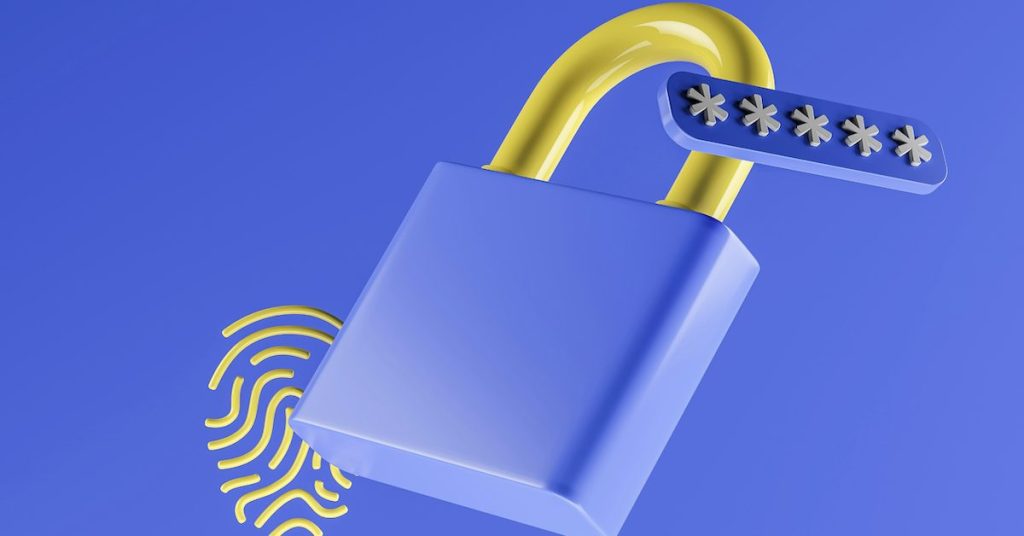A Password-less Future: Navigating the Shift in Digital Authentication

The digital landscape is evolving rapidly, and so are the methods we use to secure our online identities. Traditional passwords, once the bedrock of digital security, are increasingly becoming considered insufficient in the face of sophisticated cyber threats. This realization has catalyzed a shift towards password-less authentication—a transformative approach that not only enhances security but also significantly streamlines user access, reducing the need for complex password management. This blog delves into the emerging technologies driving this change, the benefits they bring, and the challenges they pose, offering a comprehensive overview of the future of digital authentication.
The Decline of Passwords
Passwords have long been the standard for securing access to digital resources, but their effectiveness is declining. In an era of increasing digital threats, the inherent weaknesses of password-based security—such as vulnerability to phishing attacks, ease of brute-force entry, and the human tendency to reuse or create simple passwords—are not just conspicuous, they’re alarming. This vulnerability is compounded by the growing sophistication of cyber-attacks, which can exploit even the slightest security gaps. As a result, both organizations and individuals are recognizing that traditional passwords are no longer the proper defense against unauthorized access they once were. This has set the stage for adopting more secure, password-less authentication methods to provide both heightened security and greater convenience.
Emerging Password-less Technologies
As the digital world transitions from traditional passwords, several innovative technologies are emerging to secure user identities more effectively. Among the most promising are biometric authentication, cryptographic security keys, and device-based recognition methods:
Biometric Authentication
This technology uses unique biological characteristics such as fingerprints, facial recognition, iris scans, and voice patterns to verify users. Because these attributes are inherently individual, biometric authentication offers a high level of security that is difficult to replicate or forge.
Cryptographic Security Keys
These hardware devices, such as YubiKeys or Google Titan, act as physical tokens that users must possess to access their accounts. They leverage public key cryptography to ensure that even if a device is lost or stolen, its information remains secure.
Device-Based Recognition
Modern devices and operating systems are increasingly capable of recognizing trusted devices. Once a device is registered as trusted, it can authenticate the user with minimal friction, often requiring a simple gesture or presence check.
Passkeys and FIDO2
The FIDO Alliance’s FIDO2 standards, including WebAuthn, allow for password-less logins across websites and applications. These standards enable users to log in using biometrics, mobile devices, or FIDO2 security keys, simplifying the authentication process while enhancing security.
These technologies enhance security by reducing reliance on passwords and improve user convenience by streamlining the login process and reducing the need for frequent password resets. As these technologies mature and become more widespread, they are expected to redefine the standards of digital authentication.
Advantages of Password-less Systems
Password-less authentication systems offer numerous benefits over traditional password-based security, primarily enhancing security while improving user experience and reducing operational costs.
Enhanced Security
Password-less systems minimize common security threats associated with password-based authentication, such as phishing, credential stuffing, and brute force attacks. By eliminating passwords, these systems close a significant vulnerability in IT security, as there’s nothing like a password that can be stolen or misused.
Improved User Experience
One of the most immediate benefits of password-less systems is removing the need to remember and manage multiple passwords. Users can access services and applications more quickly and conveniently, often through a simple authentication action like a fingerprint scan or a device prompt. This seamless process significantly enhances user satisfaction and can lead to higher adoption rates of new applications.
Reduced Operational Costs
Password resets and account recoveries account for a substantial part of IT support costs. Password-less systems eliminate these issues, as users no longer need to reset forgotten passwords or recover hacked accounts. This reduction in support requirements can lead to significant cost savings for organizations and a decrease in downtime related to security issues.
Compliance and Data Privacy
Modern password-less technologies are designed with privacy and compliance in mind. They often meet higher regulatory standards for data protection, as they utilize secure tokens or biometrics, which can be inherently more compliant with regulations like GDPR, HIPAA, or CCPA.
Adopting password-less authentication tightens security and aligns with modern technological trends and user expectations, making it an increasingly attractive option for businesses aiming to modernize their IT infrastructure.
Challenges in Implementation
While the shift toward password-less authentication systems offers numerous benefits, the implementation process comes with challenges. These can range from technical hurdles to organizational and user adoption issues:
Technical Complexity
Implementing password-less technologies often requires significant changes to existing IT infrastructures. Integrating new authentication methods like biometrics or security keys involves hardware and software upgrades, which can be complex and costly. Moreover, ensuring compatibility across various devices and platforms adds another layer of complexity.
Initial Costs
The upfront costs for setting up password-less systems can be substantial. Purchasing necessary hardware, such as biometric scanners or security keys for every user, and investing in software upgrades or replacements can deter organizations from switching. Additionally, costs might be associated with training IT staff to manage and maintain these new systems.
User Adoption and Resistance
Change is often met with resistance, and moving to a password-less system is no exception. Users accustomed to traditional password systems may find it difficult to adapt to new methods, especially if they perceive them as more complex and less private. Addressing these concerns through education and transparent communication is crucial to successful implementation.
Security and Privacy Concerns
While password-less methods generally enhance security, they also raise new privacy and security concerns. For instance, if compromised, biometric data cannot be changed like a password. Ensuring the security of biometric data and addressing potential privacy issues is essential to gaining user trust.
Regulatory Compliance
As with any significant change in IT systems, compliance with regulatory standards must be considered. Different regions and industries have varying requirements regarding data protection and privacy. Navigating these legal landscapes can be challenging, particularly for organizations operating internationally.
Addressing these challenges requires careful planning, stakeholder engagement, and potentially phased implementation strategies to ensure technical viability and user acceptance. Despite these hurdles, the long-term benefits of enhanced security and improved user experience make the transition toward password-less authentication a worthy pursuit for future-ready organizations.
The Future of Authentication
The future of authentication is poised to be dominated by password-less technologies, which promise to merge enhanced security with unprecedented ease of use. As we look ahead, several key trends are expected to shape this landscape:
Widespread Adoption of Biometric Technologies
Biometrics are set to become more common, not just in high-security environments but also in everyday consumer devices. The increased reliability and decreasing cost of biometric technology will likely drive its adoption across more platforms and industries.
Integration of Artificial Intelligence
AI will play a crucial role in developing more sophisticated authentication methods. It will help dynamically assess the risk associated with access requests and tailoring authentication requirements based on real-time data.
Advancements in Cryptographic Methods
New cryptographic techniques, such as zero-knowledge proofs, are expected to enhance password-less systems’ security without compromising privacy or user experience.
Regulatory and Standardization Efforts
As password-less technologies become more prevalent, regulatory frameworks and standards will evolve to address the new security challenges and privacy concerns that arise, ensuring a safer digital environment.
The shift towards password-less systems represents a significant evolution in digital security. It aims to protect against current threats and adapt to the future digital landscape. This transition, supported by continuous technological innovation and regulatory guidance, is set to redefine user experience and security standards in the digital age.
Implementing Password-less Authentication
For organizations considering the shift to password-less authentication, the implementation process involves several strategic steps:
Evaluate Needs and Options
Assess your organization’s specific security needs and user scenarios to determine the most suitable password-less technologies. Depending on your environment, this might involve choosing between biometric systems, security keys, or device-based recognition.
Pilot Testing
Conduct pilot testing with a small user group before a full rollout to identify potential issues and gather user feedback. This helps fine-tune the system and prepare for a wider deployment.
Comprehensive User Education
Educate users on the benefits and operation of the new system. Clear communication about how password-less authentication works and why it is being implemented can alleviate concerns and resistance.
Gradual Rollout
Implement the new authentication system in phases. Start with less critical systems to minimize impact and allow time for adjustment before expanding to more sensitive areas.
Continuous Monitoring and Feedback
Once deployed, continuously monitor the system for security vulnerabilities and gather user feedback to improve it. This ongoing process helps adapt to new threats and enhance user experience.
Implementing password-less authentication involves careful planning, testing, and adaptation. Organizations can enhance their security by taking a systematic approach while ensuring a smooth user transition.
Securing the Future: Password-less
The shift towards password-less authentication is not just an emerging trend but a necessary evolution to counter the sophisticated threats in today’s digital landscape. Organizations can significantly enhance their security posture by eliminating traditional passwords, streamlining user access, and reducing operational burdens. This transition, while challenging, represents a proactive approach to cybersecurity, aligning with technological advancements and user expectations for seamless and secure interactions.
As we embrace this password-less future, organizations must adopt a strategic, phased approach to implementation, ensuring that all technical, educational, and regulatory aspects are addressed. The journey towards a password-less future is an investment in enhancing digital trust and security, pivotal in fostering a safer and more efficient digital world. By staying informed and prepared, businesses can implement these advanced security measures, set new standards for digital authentication, and protect their most valuable assets in an increasingly interconnected world.

